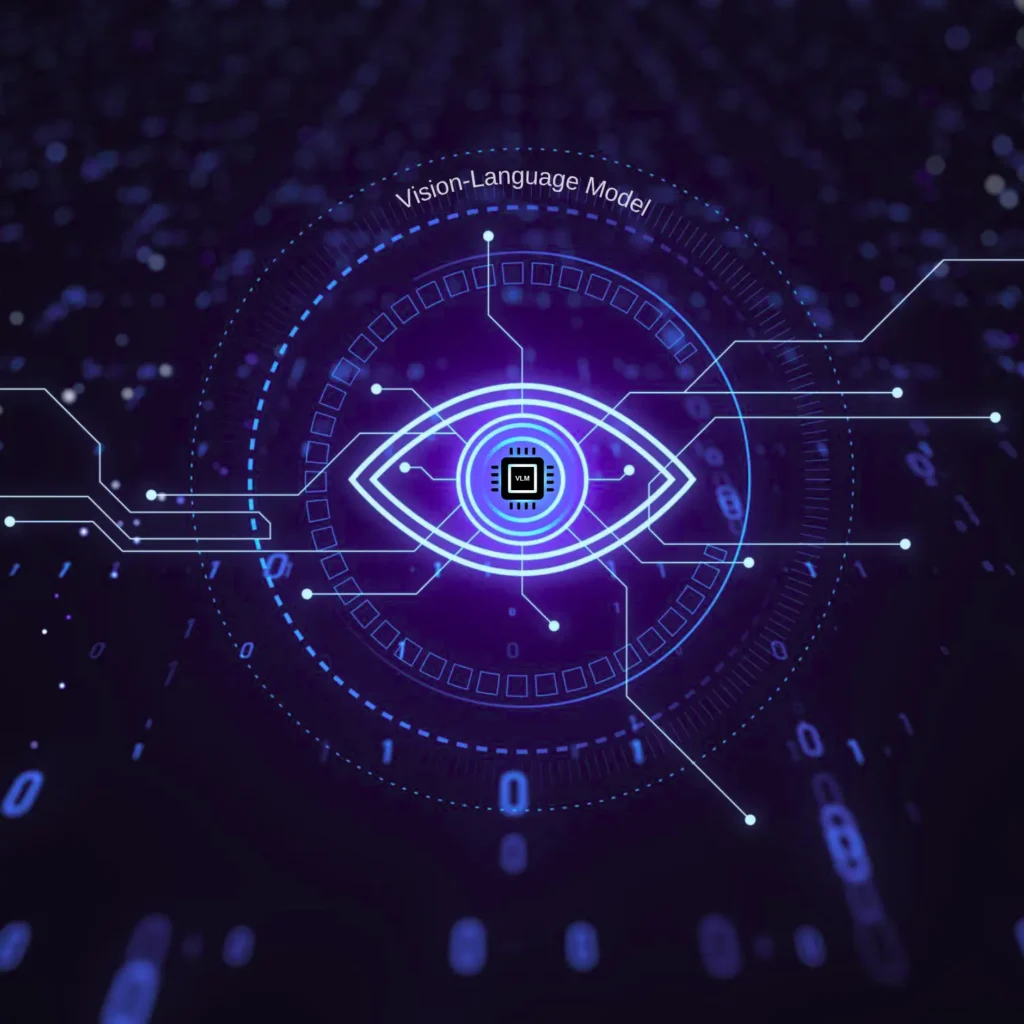2023 has been a landmark year for the digital overhaul of previously analog sectors, spearheaded mainly by the AI revolution; and we have all the reasons to believe that 2024 will continue the trends. Within a short span of time, Artificial Intelligence has become all-encompassing and pervasive within the digital world. To understand why and how this happened, we must take a dive at the technology that powers artificial intelligence systems. Natural Language Processing, or NLP, is the driving force behind this AI-fication of recent times and the brains behind AI-powered language models such as ChatGPT, Bard, and more. NLP is a subcategory of Artificial Intelligence concerned with speech and text interactions between computer interfaces and human languages. It is called “natural language” because NLP engages with and mimics human natural speech with all its nuances and complexities.
As of now, NLP is an indispensable part of modern businesses and consumer technologies. Think about the virtual assistant in your phone – be it Google Assistant or Apple’s Siri – or even the helpful guide in banking and shopping kiosks. All of the speech capabilities of these AI-powered systems are backed by applications of NLP. In fact, the global NLP market revenue is expected to reach $43 billion by 2025, growing from a meagre $3 billion in 2017. In this article, we will take a deep dive into NLP and see how some of the most widely used language models have harnessed the power of natural language processing.
Understanding Natural Language Processing (NLP)
IBM defines Natural Language Processing, or NLP, as the subfield of AI that gives computers “the ability to understand text and spoken words in much the same way human beings can.” What NLP essentially does is bring together rule-based modelling of human language (known as computational linguistics in computer science) with a combination of statistical models, machine learning, and deep learning algorithms. A fusion of these technologies allows computers to understand human speech in the form of voice or text input, complete with intent and sentiment analysis.
Sentiment analysis is a part of computational linguistics that is constantly being improved upon. It is concerned with the subjective aspects of human speech; sentiment analysis tries to extract attitude, affection, emotion, sarcasm, confusion, and suspicion from user input.
Even though NLP has caught on in recent years, the concept is anything but new. The early roots of NLP lie in the 1950s. The Turing test was presented by Alan Turing in his 1950 paper “Computing Machinery and Intelligence.” At the time, the test was not recognised as a problem distinct from artificial intelligence, although it did serve as a benchmark for intelligence. One of the tasks in the suggested test was producing and interpreting natural language automatically, laying the foundations of natural language processing.
However, advancements in NLP till the 1990s were focused on symbolic processing with complex sets of handwritten rules. The 1990s ushered in statistical language processing, something closer to the current uses of NLP in AI-powered language models.
In our time, NLP is applied in a vast array of everyday tasks, be it text and speech processing or semantic analysis. It is used in Optical character recognition, or OCR, speech recognition in various applications, text-to-speech services, grammatical analysis within chatbots, lexical semantics, discourse analysis and much more.
Beyond direct implementations, NLP powers a range of tools and applications that help in the automation of various tasks which in turn saves time and resources and aids in improved customer engagement.
Introducing LLaMA: Language Learning and Modeling Agent
LLaMA, which stands for Large Language Model Meta AI is a group of large language models, or LLMs, which were released by Meta AI in February of 2023 and are still in development. LLaMA models range from 7B to 65B parameters. The important thing to note about LLaMA is that these languages are pre-trained and are based on Google’s transformer architecture. The transformer architecture was introduced by Vaswani et al. in the paper “Attention is All You Need.” It is a kind of neural network architecture made for processing sequential data which also is language. Transformer uses a mechanism called “attention” to weigh the importance of different parts of the input sequence when making predictions.
Recently, Meta released LLaMA 2, which is the more powerful reiteration of LLaMA with parameters ranging from 7B to 70B. Meta AI claims that LLaMA 2 is specifically optimised for use cases involving dialogues and is also able to beat most other open-source chat models on a number of benchmarks. The transformer architecture comes in handy in capturing long-range dependencies and relationships within the input data – an important part of pre-training.
LLaMA too, like most other LLMs, makes ample use of machine learning and deep learning algorithms. Deep learning is integral to the pre-training phase of LLMs in which the model learns prediction and context detection. Transfer learning is also a part of the same, concerning smaller, domain-specific datasets. Other use cases where machine learning and deep learning are critical are attention mechanisms, parameter tuning, and obviously inference.
Both LLaMA and LLaMA 2 are being widely deployed in multiple commercial applications. These include content generation that spurts out tailored content, customer assistance with virtual assistants, context-specific information retrieval and even financial analysis. Its mathematical abilities make it a very capable statistical tool.
Exploring ChatGPT: Conversational AI Powered by GPT
ChatGPT has taken the world by storm. It is a chatbot developed by OpenAI and is based on the Generative Pre-trained Transformer, or GPT architecture – specifically GPT 3. The GPT series utilizes a deep neural network architecture – the transformer, which has proved to be really successful in natural language processing tasks.
ChatGPT was and continues to be pre-trained on an enormous dataset that includes parts of the internet, books, articles and a myriad of other textual sources. GPT-3 also boasts to be one of the largest language models to date with 175 billion parameters. The strength of ChatGPT lies in its capacity to interpret user questions and generate comprehensive responses and outcomes based on the majority of textual material that is available online worldwide, or at least material that was available when ChatGPT was trained before 2021.
As an AI-powered chatbot, ChatGPT is obviously inclusive in the broader field of NLP. ChatGPT is partly responsible for spearheading the NLP revolution. It has completely transformed customer support with instantaneous and accurate responses, enhanced language translation to new heights, and made market research and sentiment analysis unbelievably easier.
However, limitations exist that must also be addressed. Biases in responses pose a real threat in shaping user opinion, which in turn has wide-ranging political and cultural repercussions. Not to mention that contextual understanding is still hit or miss, and it lacks emotional intelligence.

Analyzing Bard: AI-Powered Language Generation
Bard is another AI-powered chatbot with generative capabilities that was developed by Google and released in 2023. Bard’s development and release can be inferred as a direct response to the skyrocketing rise of OpenAI’s ChatGPT. It was initially built upon LaMDA, a prototype LLM, but was later shifted to PaLM and more recently to Gemini. Gemini is a multimodal LLM and is said to be much more powerful than its predecessor.
Google positions and markets Bard more as a “collaborative AI service” than a chatbot or a search engine. In the background, Bard employs a decoder-encoder transformer language model. 780 billion tokens from papers and dialogues make up the pre-trained text corpus of Bard. According to Google’s tests, Bard performed better in terms of interest than human answers. The correctness of the data presented to the user is enhanced through the interaction between the LaMDA or Gemini transformer model and an external information retrieval system.
Bard’s shift to the Pathways Language Model or PaLM was a milestone, PaLM being a highly capable LLM with an upper limit of 540 billion parameters. PaLM enables Bard to power through commonsense reasoning, arithmetic reasoning, joke explanation, code generation and even high-level translation.
Bard’s move to Gemini is equally important. Gemini is a multimodal model, which means that every context window is capable of carrying multiple forms of input. A multimodal conversation is possible because the various modes can be interspersed and do not need to be given in a specific order.
Comparing LLaMA, ChatGPT, and Bard
| Feature | ChatGPT | Bard | Llama |
| Data: | 600 billion words of text & code | 1.56 trillion words of text & code | 137B parameters (dataset size not disclosed) |
| Architecture: | Decoder-only Transformer (GPT-3) | Encoder-decoder Transformer (T5) | Decoder-only (specific architecture undisclosed) |
| Parameter count: | 175B (GPT-3), 800B (GPT-4) | 137B | 137B |
| Layers: | 6 (GPT-3), 60 (GPT-4) | 24 | Not disclosed |
| Tokenization: | Wordpiece | Byte Pair Encoding (BPE) | Not disclosed |
| Pre-training objectives: | Language modelling, dialogue, code | Multilingual language modelling, factual language modelling, reasoning | Language modelling, code generation |
| Fine-tuning tasks: | Dialogue generation, text summarization, code generation | Question answering, summarization, translation, code generation | Summarization, code generation, factual language modelling (limited data) |
| Model size: | 530GB (GPT-3), 670GB (GPT-4) | ~430GB | Not disclosed |
| Latency: | ~50ms (GPT-3), ~20ms (GPT-4) | ~40ms | Not disclosed |
| Accuracy metrics: | BLEU score, ROUGE score, perplexity | BLEU score, ROUGE score, accuracy on benchmark tasks | Accuracy on benchmark tasks (limited data) |
| Accessibility: | Paid API access | Closed beta; public launch soon | Open-source |
| Cost: | Tiered pricing based on model version and API usage | Free (beta), API pricing expected after the launch | Free (open-source) |
| Safety: | Extensive safety training to minimize bias and harmful outputs | Continuous ethical considerations and safety improvement | Safety measures implemented, and further research ongoing |
The Future of NLP and Language Processing
Although NLP is nothing new in the domain of computer science, its practical implications have just started to sprout along with the NLP revolution of the 2020s. In the upcoming years, developments in a number of areas of NLP should be anticipated, including chatbots, sentiment analysis, automatic machine translation, speech recognition and more. NLP will continue to be more interwoven with other cutting-edge technologies like blockchain, the Internet of Things, and artificial intelligence. Through these integrations, multiple operations will be even more automated and optimised, and communication between devices and systems will be safer and more effective.
Here are a few changes that can be predicted in the future of language processing:
- A steady rise in investments in NLP as businesses and companies become aware of the potential use cases of NLP.
- A visible improvement in service desk responses thanks to better human-computer interactions and smarter conversational AI
- Sentiment Analysis will continue to be embraced by companies in their operations from more varied sectors
- Implementation of voice-based biometrics will gain traction
There is still a long way to go in the NLP revolution, and there are a lot of exciting things in store for ChatGPT, Bard and other sophisticated language models. Research is still being done to further improve the models’ contextual awareness, safety, and inclusivity.
Real-World Applications
If you pay attention, you can find real-world applications of NLP everywhere, from search engines to surveys.
- Translation
Translation is among the most popular applications of NLP. The first natural language processing (NLP) translation machine was demonstrated by Georgetown and IBM in the 1950s. It was capable of automatically translating 60 Russian lines into English.
Today’s translation apps accurately convert text and voice formats for the majority of world languages using natural language processing (NLP) and machine learning.
- Sentiment Analysis
Sentiment analysis is frequently applied to social listening procedures on Twitter and other platforms. Analysing the sentiment of their users’ feedback on social media sites helps organisations learn how their brand appears. By implementing sentiment analysis, organisations are also able to better analyse textual data and systematically monitor brand and product feedback.
To better show how effective NLP may be for a company, let’s examine an example in advertising. A marketing team could filter positive customer sentiments to determine which benefits are worth emphasising in any subsequent ad campaigns by using the sentiment analysis data to produce better user-centred ads.
- Voice Assistants
Voice recognition technology used by smart assistants like Alexa, Bixby, and Siri to comprehend common questions and phrases is powered by NLP.
They then answer user queries using a branch of natural language processing known as natural language generation (NLG). These voice assistants are now being trained to offer more than just one-way responses as NLP advances. Newer iterations can complete and even handle order payments in their ability as shopping assistants.
NLP: Implications and Considerations for the Future
As Natural Language Processing (NLP) models improve at breakneck speeds, it also raises some serious ethical concerns. The primary issue, which we have already touched upon, remains the bias within these models. The biases they confidently output can inadvertently and very easily perpetuate and amplify social biases present in the data used for training. This bias will more often than not lead to discriminatory outcomes and might reinforce existing inequalities. Compounding on top, the potential for malicious use of NLP, such as generating deceptive content or deepfake text remains a significant ethical challenge.
Not to mention that Large language models, while powerful, are responsible for considerable privacy and security challenges. The vast amount of data these models process including user-generated content raises concerns about the unintentional exposure of sensitive information. There always lurks a risk that models such as Bard and ChatGPT trained on diverse datasets inadvertently memorize and generate potentially private or confidential details.
To counter these fallacies, human oversight and responsibility are extremely critical in the development and deployment of NLP technologies. Despite the capabilities of advanced models, they are not infallible; human judgment is the only reliable method at the end for contextual understanding, nuanced decision-making and ensuring ethical considerations are addressed. Developers and engineers bear the responsibility of regularly addressing biases, fixing unintended consequences and transparently communicating the limitations of NLP systems.
Conclusion
The NLP revolution has reached a major turning point with the emergence of the AI-powered language models we have discussed so far. Our interactions with AI systems have changed as a result of their extraordinary capacity to comprehend, produce and communicate in human language – all thanks to NLP. However, even as we applaud these developments, we must continue to be mindful of the moral ramifications and strive towards using NLP to improve society; not deteriorate it. The potential for NLP applications appears endless where we stand today and points boldly to a time when AI-powered language generation and understanding permeate every aspect of our daily lives.
Right in line with the AI revolution, DaveAI has unveiled GYRD – a multimodal generative AI middleware hub that delivers cutting-edge AI experiences to businesses. GRYD represents a step forward in AI innovation with more than 10 massive AI model integrations, 15 million parameter-trained SLMs, and a resolute dedication to 100% data protection and control. To learn more, go here: GRYD



